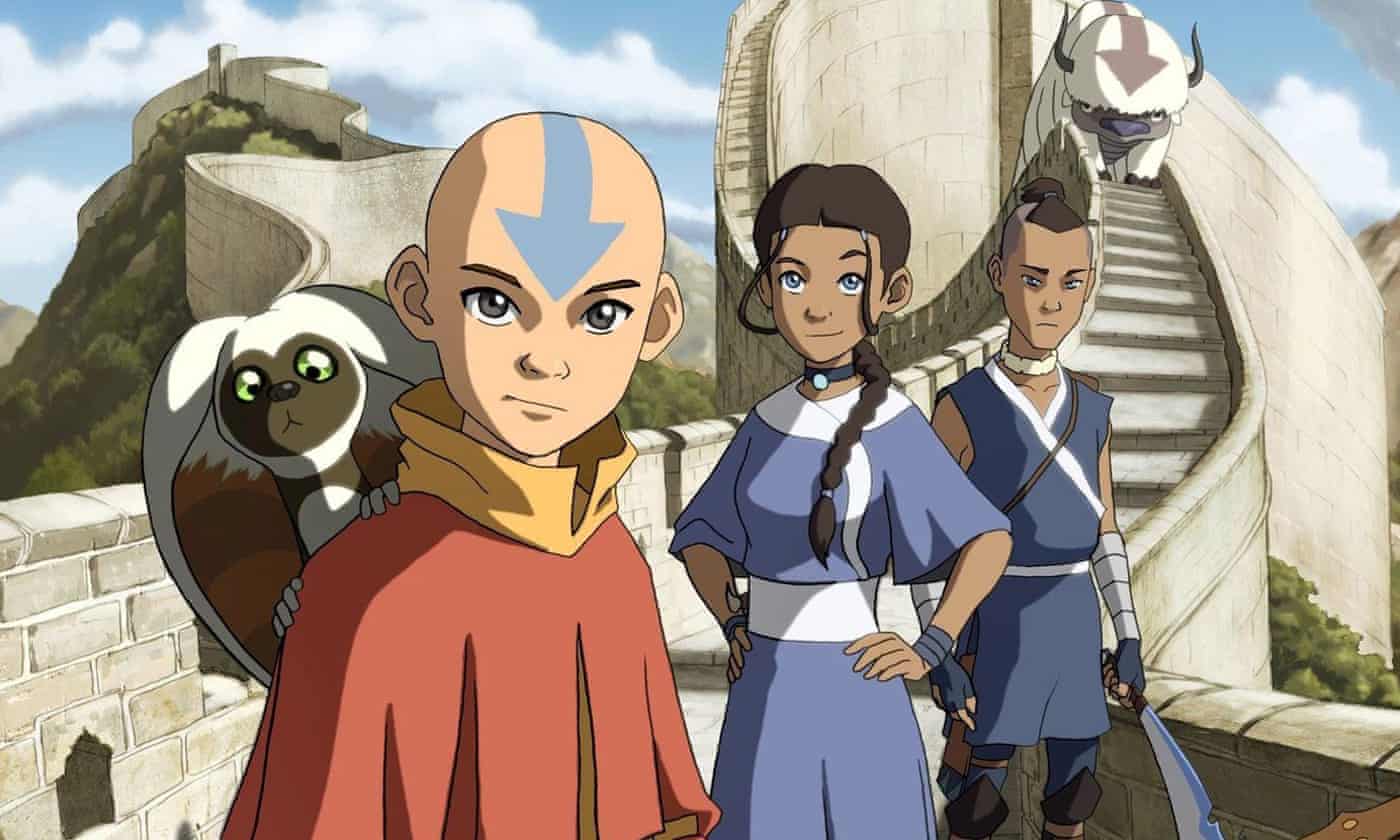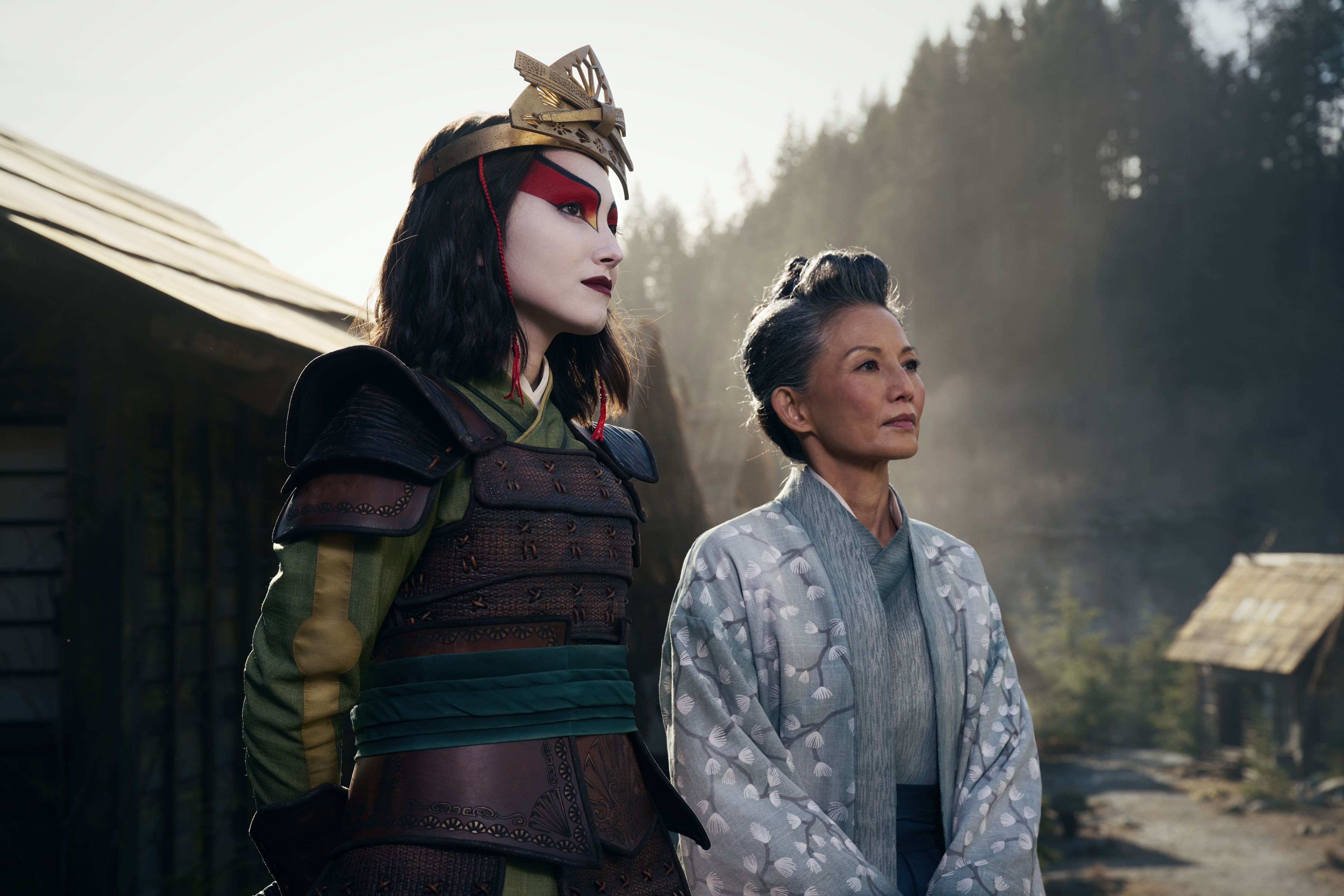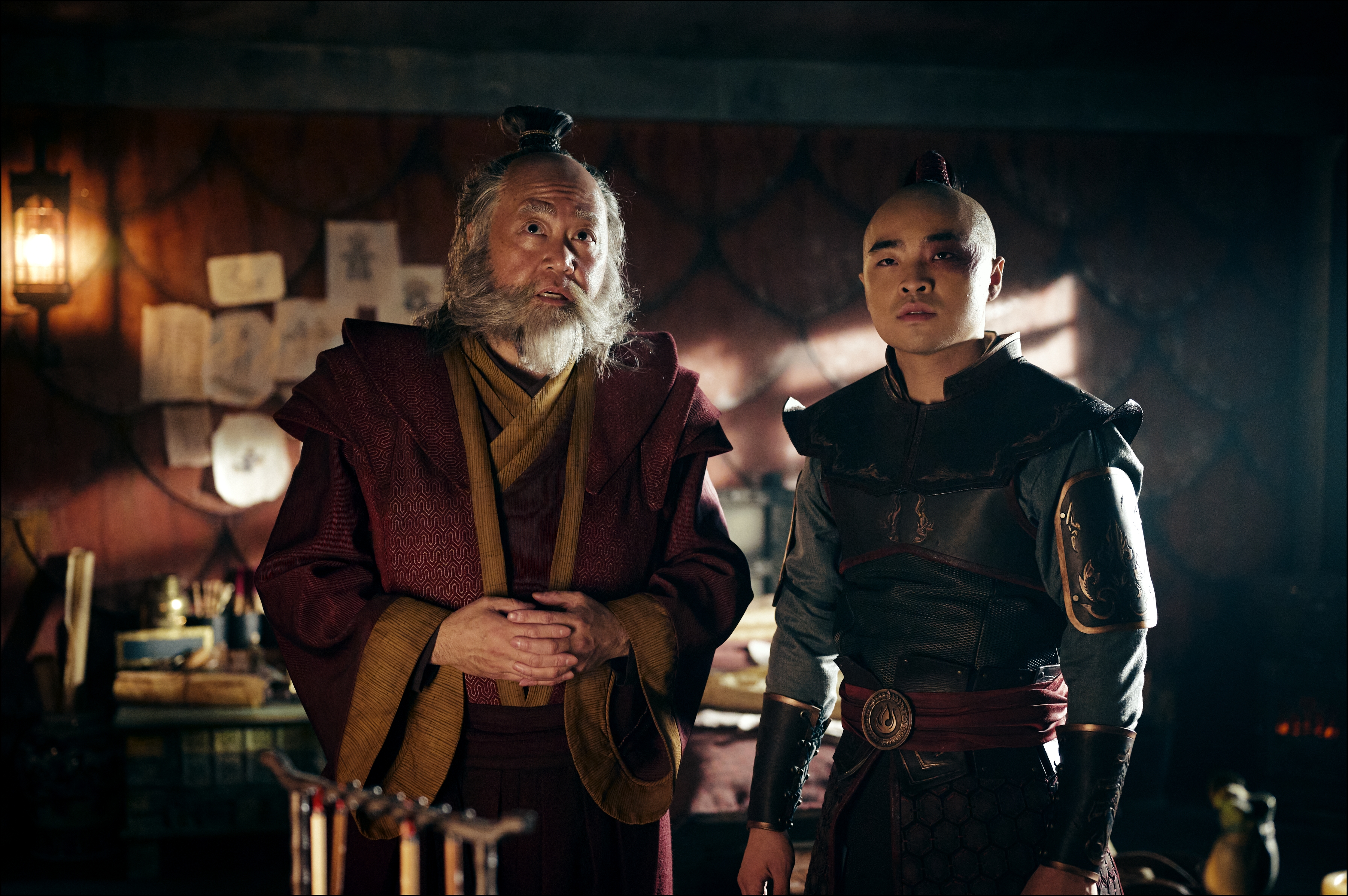How the Costume Designer Behind Netflix’s ‘Avatar: The Last Airbender’ Brought the Iconic Animated Looks to Life
Farnaz Khaki-Sadigh explains why Aang's outfit was so hard to perfect and shares the easter eggs hiding in the show's fashion.


2005’s Avatar: The Last Airbender is one of the best examples of world-building put to screen in television history—thanks in large part to the show's fashion. The Nickelodeon animated series pulled its viewers into the magical universe of “benders,” by giving each of the world’s four nations—the Fire Nation, the Earth Kingdom, the Water Tribe, and the Air Nomads—a distinct, recognizable aesthetic inspired by Asian and Indigenous cultures. The original ATLA also handled intricate character arcs and heavy themes around war and colonialism with a nuance that both kids and adults could appreciate, and the gorgeous 2D animation sucked every viewer deeply into the fantasy world. So Netflix’s new live-action adaptation had a tall order to meet when it came to bringing the beloved cartoon to life.
The streamer met the challenge with an impressive, charming flair by gathering a talented cast and crew filled with fans of the original cartoon, including costume designer Farnaz Khaki-Sadigh. While speaking with Marie Claire over Zoom, the Emmy winner—who previously worked on sci-fi/fantasy shows like The 100 and R.L. Stine’s The Haunting Hour— shared how she was able to successfully infuse real-world cultural inspirations into all of the outfits. It's something she hopes has lasting effects outside of Hollywood: “I hope that it inspires [viewers] to learn about other cultures and different parts of the world, to want to go visit them and understand them,” she says of the new series.

Lead characters Aang (Gordon Cormier), Katara (Kiawentiio), and Sokka (Ian Ousley) in Netflix's 'Avatar: The Last Airbender.'
Here, Khaki-Sadigh chats about her favorite costumes from the original series, her months-long research process, and the practicalities she considered while designing real-life versions of Team Avatar’s looks.
Marie Claire: How familiar were you with the original animated series when you got the opportunity to work on the Netflix show?
Farnaz Khaki-Sadigh: I watched it a dozen times before I even got the job. When it was first announced that they were going to do a live-action series, I was like, ‘I want to work on this.’ This is a dream job.
Now knowing you're a fan, how did you approach honoring the original show while putting your own spin on the live-action clothes?
FKS: I definitely wanted to pay homage to the original. I think a lot of that comes through with the color palettes that we've chosen. [Also] keeping the silhouettes of the original animation and then breathing life into it with real-world materials and inspirations from the various cultures. The animation is more of a broader reference of the Asian and Indigenous cultures, so we went in and did a bit more specification—to give it a more dimension and narrow each culture in the show down to a specific group.
With the Southern Water Tribe, for example, we did take a lot from the Inuit culture. But I also learned that they did a lot of trades with certain other Indigenous groups and Northern Vikings, so we have a lot of those influences coming into [their clothing] as well. With the Northern Water tribe, we went a little bit more towards the Siberian Indigenous groups, such as the Yupiks and the Turkic tribes, to give it more variety and differentiation between the two fictional tribal nations. Then with the earth-benders, we see other cultures referenced. Omashu is very much based on Southeast Asian and Indian cultures. Whereas, there are smaller towns that we see in certain episodes that are based on other Asian cultures and Asian countries. So we brought in some Korean influences and some Vietnamese influences [for those]. We wanted to give [each nation’s aesthetic] a broader spectrum as opposed to just unifying everything under the one umbrella.
Get exclusive access to fashion and beauty trends, hot-off-the-press celebrity news, and more.

Aang, Katara, and Sokka in their signature looks from the Nickelodeon animated series.
What were some of the challenges you faced in bringing these animated looks to life?
FKS: It was definitely a lot of trial and error. You want to be authentic, but then you also have to take into consideration the fact that it is a show, and it is present-day as opposed to the mid-1800s, when the show is technically based on. They used a lot of materials back then that we don't use in the present-day. So it's just finding a balance of making the costumes look like they belong in that time period, but they're still comfortable enough for actors to wear today, and that they can move in it and fight and do all of their actions. We tested a lot of things. We built mockups and had stunt performers try to do fight moves in them to see what we had to change. Like if the weight of the armors were too heavy, or if they didn't sit properly, and [the actors] couldn't move their arms a certain way to do the bending that they needed to do. And we adjusted accordingly. We had a good enough chunk of time to do these trial-and-error runs to make sure that, once the garments were actually put on the performer, they were actually functional for them, and they could move and perform in them.
Is there a character who you really loved designing for, or one of the costumes that you're really proud of?
FKS: I cannot pick a favorite, to be honest. Every time a costume was done, and we would see it for the first time on camera, I think I cried a little bit because it felt so good. It felt surreal as a fan too, just to see everything come to life.

Suki (Maria Zhang) and Mayor Yukari (Tamlyn Tomita), residents of Kyoshi Island, in Netflix's live-action series.
Aang has the most recognizable look out of all of the characters. What was the process of figuring out his costume?
FKS: That one was the hardest one because it is one of the simpler ones out of all of them. Just because it's simple, it doesn't make it easy. We had to go through so many different materials to make sure that it flowed and moved with the air-bending. Then we had to make sure that the colors worked with the animation, but were also realistic at the same time. They had to work within our Air Nomad world, especially since the Southern Air Temple was based on Tibetan monks and their aesthetic [on the show] was pulled from that culture and their color palettes. We decided that, within the Air Nomads, we couldn't use any synthetic materials or anything that came from animals, just because of what that culture is based on. Everything had to be natural fibers. For the color of the Cape, I think we went through anywhere between like six and 10 different fabrics. We made so many different capes for him because the color kept shifting under the lights. So we had to find the perfect material and the perfect color, that moved, looked great, and didn't change color under the camera lights. One of the simplest costumes took us the longest time to figure out, but it was worth it.
The show also has so many great accessories from Katara’s necklace and Sokka’s bone choker to the Fire Nation crowns and helmets. What was the process of figuring out which accessories from the cartoon would be brought into live action?
FKS: We wanted to feature anything that was really iconic to the characters. Katara's necklace is a very big part of her character. It's a memento from her mother that sort of brings the North and the South together. It's all those little things that really made the characters in the animation. You look at that piece and you know exactly who that person is without them actually having it on. So those are the elements that we wanted to include.

Uncle Iroh (Paul Sun-Hyung Lee) and Prince Zuko (Dallas Liu) in Netflix's live-action series.
Did it ever get overwhelming to handle something on this scale of world-building?
FKS: Absolutely, all the time. I did so much research and so much reading and talking to people from those cultures and learning from them. I probably spent like three or four months before I started the project—just between prepping for my interviews and then prepping to start conceptualizing once I had the job. I was constantly trying to learn more about the materials that were used and why they were used, and why certain cultures used certain colors and what it represented. There's how the materials moved; how the garments moved; how different ranks and social status affected and influenced the garments in that time period; the wars, the trade routes, and what was and wasn't traded, what was traded for what...all of those things. It really was a historical study of the cultures within the story as well as in real life. For example, Kyoshi is very much based on Japanese culture, and specifically Samurai culture. There's actually a group of female warriors in Japan called Onna-bu Geisha. A lot of the inspiration for the Kyoshi Warriors comes from those female samurai warriors.
Are there any looks you're looking forward to bringing to life in future seasons?
I'd really love to do Ba Sing Se. That would be a world that I really would love to create, because I think there's just so much there that we can play on. I would love to do Ember Island. That was a really fun storyline in Book Three, and I think it would be really fun to realize that.
This interview has been edited and condensed for clarity.

Quinci LeGardye is a Culture Writer at Marie Claire. She currently lives in her hometown of Los Angeles after periods living in NYC and Albuquerque, where she earned a Bachelor’s degree in English and Psychology from The University of New Mexico. In 2021, she joined Marie Claire as a contributor, becoming a full-time writer for the brand in 2024. She contributes day-to-day-content covering television, movies, books, and pop culture in general. She has also written features, profiles, recaps, personal essays, and cultural criticism for outlets including Harper’s Bazaar, Elle, HuffPost, Teen Vogue, Vulture, The A.V. Club, Catapult, and others. When she isn't writing or checking Twitter way too often, you can find her watching the latest K-drama, or giving a concert performance in her car.